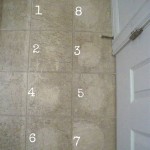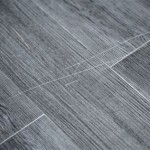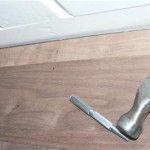How to Stick Vinyl Flooring Wood: A Comprehensive Guide
Vinyl flooring has become increasingly popular due to its affordability, durability, and versatility. Among the various types of vinyl flooring, vinyl wood planks offer a realistic wood look and feel without the high cost and maintenance of real hardwood. However, installing vinyl flooring involves a few steps, and sticking it down requires specific techniques and considerations. This comprehensive guide will provide detailed instructions on how to stick vinyl flooring wood, ensuring a successful and long-lasting installation.
Preparing the Subfloor
A smooth and level subfloor is crucial for a successful vinyl flooring installation. Any unevenness or imperfections will be reflected in the finished floor, leading to a less-than-ideal result. Before you begin sticking the vinyl planks, ensure the subfloor meets the following criteria:
- Clean and dry: Remove any dirt, debris, dust, or residue from the subfloor using a broom or vacuum cleaner. If necessary, use a damp cloth to clean the surface thoroughly.
- Level: Any significant bumps or dips in the subfloor should be addressed. Utilize a leveling compound or self-leveling concrete to create a smooth surface.
- Solid and stable: Ensure the subfloor is structurally sound and can support the weight of the vinyl flooring. Replace any damaged or weak portions of the subfloor before proceeding.
Once the subfloor is properly prepared, you can move on to the next step of installing the vinyl flooring.
Applying Adhesive
Adhesive serves as the bonding agent between the vinyl flooring and the subfloor, ensuring a secure and long-lasting installation. The type of adhesive used will vary depending on the specific vinyl planks and the subfloor material. Here are some common adhesive options available:
- Full-spread adhesive: Applied directly to the subfloor using a notched trowel, this type of adhesive provides complete coverage and strong adhesion.
- Perimeter adhesive: Applied around the perimeter of each vinyl plank, this option is more economical but might require additional securing methods for certain areas.
- Peel-and-stick adhesive: This self-adhesive option comes pre-attached to the back of the vinyl planks, simplifying installation but potentially offering weaker bond.
Before applying adhesive, ensure the subfloor is dry and free of moisture. Follow the manufacturer's instructions on the adhesive product for drying time and any specific application techniques. Remember to use gloves while handling adhesive to avoid skin irritation.
Installing Vinyl Flooring
After applying the adhesive, you can begin installing the vinyl flooring planks. This process may vary slightly depending on the type of vinyl flooring and adhesive used. However, the general steps remain consistent:
- Start in a corner: Begin laying planks from a corner of the room, working towards the center. Ensure the first few planks are properly aligned and flush with the wall.
- Stagger seams: To avoid a repetitive pattern, stagger the seams of each row of planks. Avoid placing seams directly over one another.
- Use spacers: Use spacers to maintain consistent gaps between planks and walls, allowing for expansion and contraction due to temperature changes.
- Secure planks: Use a roller or heavy object to press down on the planks, ensuring strong adhesion to the subfloor. Allow the adhesive to fully cure before applying pressure.
- Cut planks: For areas requiring cuts, use a sharp utility knife or a specialized vinyl flooring cutter to achieve precise cuts. Remember to measure twice and cut once for a clean and accurate fit.
As you progress with the installation, ensure that all planks are properly aligned and pressed firmly into place. Once the entire floor is covered, allow the adhesive to fully cure according to the manufacturer's instructions.
Additional Tips
Here are a few additional tips that can enhance your vinyl flooring installation:
- Consider using a vapor barrier: If installing in a basement or other areas with high humidity, using a vapor barrier beneath the subfloor can prevent moisture damage.
- Use a transition strip: When connecting vinyl flooring to other flooring types, use a transition strip to create a smooth transition and prevent tripping hazards.
- Protect the new floor: Protect your new vinyl floor from scratches and damage by using furniture pads or protective mats under heavy objects.
Sticking vinyl flooring wood requires careful preparation, precise application, and attention to detail. By following these steps and considering additional tips, you can ensure a successful and long-lasting installation.

L And Stick Vinyl Flooring All Things To Know Before Lx Hausys

How To Install Vinyl Plank Flooring Anything

7 Things To Know Before Trying L And Stick Flooring

L And Stick Vinyl Flooring For Our Basement Renovation Not Your Grandma S A Life Unfolding

Self Adhesive Vinyl Floor Planks On Staircase Installation

How To Install L And Stick Vinyl Plank Flooring Floor Preparation

How To Install L And Stick Vinyl Flooring Over Existing

How To Fix Loose Or Curling Self Adhesive Vinyl Floor Tiles L And Stick Pvc

Best Underlayment Subfloor For L And Stick Tiles Self Adhesive Vinyl Floor

Install L And Stick Vinyl Floor Planks In The Bathroom More To Mrs E
Related Posts








